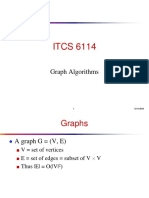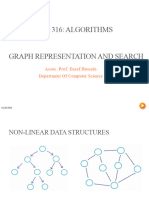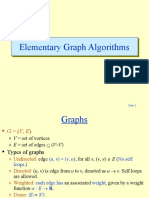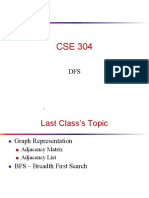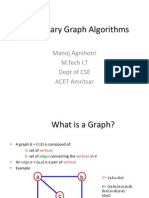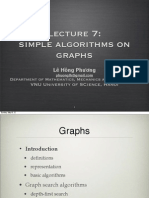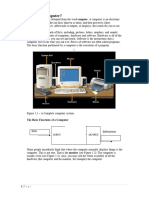0% found this document useful (0 votes)
255 views71 pagesGraph Theory
- A graph G is represented by a set of vertices V and edges E connecting the vertices.
- Breadth-first search (BFS) is an algorithm for exploring a graph by expanding the frontier of explored vertices across the breadth of the graph.
- BFS uses a queue to iteratively dequeue the next vertex to explore, discover its neighbors, and enqueue them to be explored later. This process colors vertices white, gray, and black to track explored, discovered but not yet explored, and fully explored vertices respectively.
Uploaded by
Khayyam AhmadCopyright
© Attribution Non-Commercial (BY-NC)
We take content rights seriously. If you suspect this is your content, claim it here.
Available Formats
Download as PPT, PDF, TXT or read online on Scribd
0% found this document useful (0 votes)
255 views71 pagesGraph Theory
- A graph G is represented by a set of vertices V and edges E connecting the vertices.
- Breadth-first search (BFS) is an algorithm for exploring a graph by expanding the frontier of explored vertices across the breadth of the graph.
- BFS uses a queue to iteratively dequeue the next vertex to explore, discover its neighbors, and enqueue them to be explored later. This process colors vertices white, gray, and black to track explored, discovered but not yet explored, and fully explored vertices respectively.
Uploaded by
Khayyam AhmadCopyright
© Attribution Non-Commercial (BY-NC)
We take content rights seriously. If you suspect this is your content, claim it here.
Available Formats
Download as PPT, PDF, TXT or read online on Scribd
/ 71















